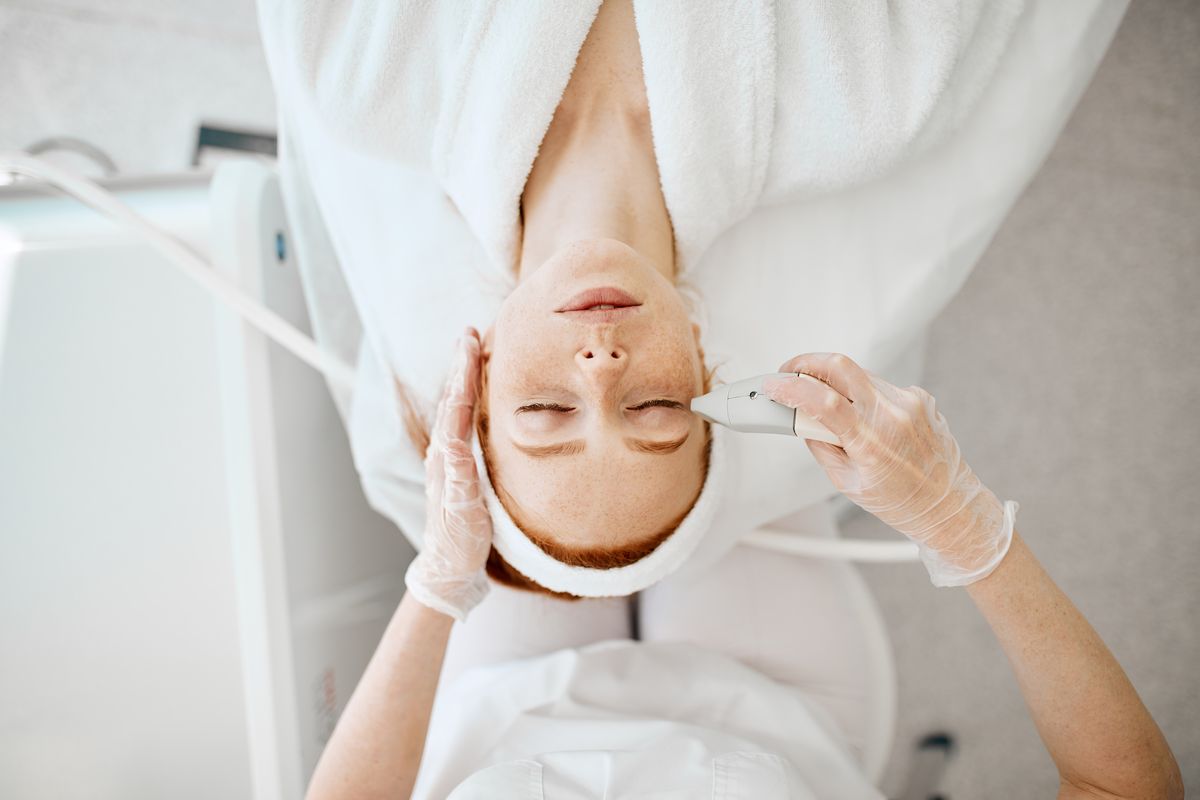Laser treatments have become an indispensable tool in aesthetic medicine, offering solutions for a wide range of skin problems - from skin rejuvenation, removal of vascular lesions, blood vessels, benign nodules and epilation. Their growing popularity in aesthetic gynaecology also highlights the versatility and effectiveness of this method. Whatever the objective, the overriding goal of laser therapy is patient satisfaction, achieved through a precisely selected treatment method.
A wide range of lasers are used in the treatment of skin problems, from low-energy, biostimulative lasers to high-energy lasers such as the CO2, Nd:YAG or argon laser. Choosing the right laser depends on the purpose of the treatment and requires an understanding of how laser light interacts with different chromophores - molecules that absorb light. The effectiveness of laser therapy depends on the precise adjustment of the wavelength to the targeted chromophore, allowing targeted action on haemoglobin, melanin or water in the skin
Benefits of laser treatments
Laser treatments in aesthetic medicine and dermatology have many benefits that make them an attractive choice for patients seeking effective and safe treatments for a variety of skin problems. The main advantages of these technologies are their precision, minimal invasiveness, short recovery period and ability to achieve lasting and visible results.
One of the greatest advantages of laser treatments is their unparalleled precision. Lasers allow very small areas of skin to be targeted with high accuracy, minimising the risk of damage to surrounding tissues. As a result, treatments can be tailored to each patient's specific needs, focusing on problem areas without affecting healthy skin. This precision is particularly important in delicate areas such as the face or eye area.
Compared to traditional surgical methods, laser treatments are less invasive. They do not require large incisions or long periods of hospitalisation, making them less taxing on the patient. Minimal invasiveness also means less pain and discomfort during and after the procedure, which is an important factor for many people opting for such procedures.
Thanks to its less invasiveness, the recovery period after laser treatments is much shorter compared to traditional treatments. Many people can return to their daily activities almost immediately after treatment or after a short period of rest. This makes laser treatments ideal for busy people who cannot afford a long recovery period.
Laser treatments offer long-lasting and often even permanent solutions to many skin problems. From the removal of unwanted hair, to the reduction of vascular lesions, to skin rejuvenation, results are usually visible after the first sessions. What's more, improvements in skin quality and appearance can bring significant benefits to patients' wellbeing and confidence.
The safety of laser treatments is a priority that requires detailed attention from both the professionals performing the procedures and the patients opting for this type of procedure. The key elements that contribute to the safe use of lasers are not only the choice of the right device, but also the adherence to safety procedures, the adaptation of the treatment to the individual needs of the patient and the continuous education and improvement of skills by the medical staff.
Choosing the right device and procedure
The safety of the treatment starts with choosing the right type of laser, adapted to the skin problem being treated and the patient's skin type. It is important to use certified devices that are tested and approved by the relevant regulatory bodies. In addition, the treatment procedure must be based on up-to-date medical knowledge, which requires physicians and laser technicians to be continuously educated on new technologies and treatment methods.
Risk minimisation through compliance with safety procedures
Safety procedures include a number of measures, such as a thorough pre-surgery consultation in which potential contraindications are assessed and patient expectations are set, as well as trial skin exposures to assess response. It is also important to use appropriate protective measures, such as safety goggles for the patient and staff, to minimise the risk of visual damage.
Tissue reactions to lasers
Different types of lasers produce a variety of effects on tissue, ranging from electromechanical to photochemical. Understanding these mechanisms allows effective treatment planning to achieve the desired results with minimal risk of damage. For example, harnessing the heat effect of lasers can lead to targeted destruction of unwanted structures, such as pigmented lesions or hemangiomas, while maintaining the integrity of surrounding healthy tissue.
Stimulating healing processes
In addition to eliminating skin defects, some laser treatments can stimulate regenerative processes in the skin, such as angiogenesis or collagen production. This contributes not only to improved aesthetics, but also to strengthening skin structure and promoting a healthier appearance.
The safety of laser treatments depends on a number of factors, from the appropriate selection and use of laser equipment, to the adherence to safety procedures, to the competence and experience of the staff performing the treatment. With a responsible approach and adherence to established standards, laser treatments can be safe and effective, offering patients effective solutions to their skin problems.

